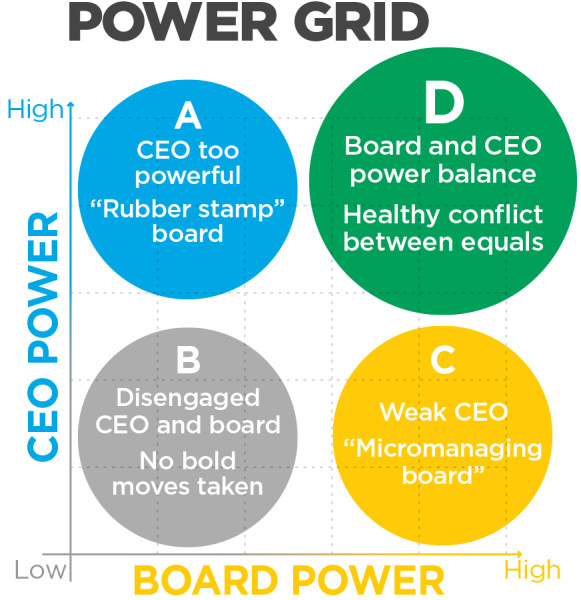Try this: Clear your mind, and think about your next board meeting. How do you feel? Are you upbeat with anticipation or anxious with stress? After board meetings, are you elated because you accomplished great things, or are you exhausted and relieved that it’s over?
[section]
[section-item 6]
[row]
[column 12]
The board/CEO dynamic is among the most critical relationships at a co-op, with the power to impact long-term prosperity, employee morale, member engagement, and other key facets.
The secret to a healthy board-CEO relationship can be summed up in one word: balance.
[/column]
[/row]
[/section-item]
[section-item 6]
[row center]
[column 12]
[image-caption title="Adam%20Schwartz,%20CEO,%20The%20Cooperative%20Way" description="%20" image="/remagazine/articles/PublishingImages/AdamSchwartz_RESIZED.jpg" width="260" /]
[/column]
[/row]
[/section-item]
[/section]
Balance comes from a mutual understanding of the roles and responsibilities entrusted to the CEO by the board and a commitment not to cross established boundaries.
I can offer you a simple strategy for achieving that balance: Embrace conflict.
For many people, even co-op CEOs and board members, the idea of deliberately creating conflict can seem contrary to what we’re taught throughout our lives. But management study after management study shows that conflict in the boardroom is a productive thing, so long as it’s healthy and respectful. Good conflict increases accountability, it helps foster new ideas, and it challenges everyone to grow.
Power Balance
For boardroom conflict to be productive, everyone at the table must have equal standing.
Take a look at the diagram below. It plots how changes in this standing, or power, can impact the board/CEO dynamic and ultimately the co-op. I define power as “the ability to get things done.”

The ideal board/CEO relationship is found in Circle D, where both parties enjoy a high level of power. In this space, there is balance, and the best interests of the co-op and its members are at the forefront.
The other three circles are detrimental to the health of the co-op.
In Circle A, you have a CEO who has the majority of the power and a compliant, “rubber stamp” board. This model does have its supporters, but over time, the co-op risks ethical abuses, stagnation, low member engagement, and non-responsive management.
Circle B shows a co-op with a disengaged CEO and board, where the status quo reigns and no bold moves are taken. If it does not change, the co-op risks decline.
In Circle C, the board wields power, and the CEO is weak. This model of a micromanaging board also has its proponents, but it too is detrimental to the long-term health of the co-op, leading similarly to potential ethical abuses, stagnation, and low member engagement.
Circle D is where you want your co-op to be. Here, the board serves as scout, advisor, strategic thinker, and occasionally as cheerleader or even disciplinarian. The CEO takes on the role of leader and implementer, handling the responsibilities of the position with grace and dignity while ensuring that members and employees are treated equitably. There is conflict in Circle D, but it is between equals who respect one another’s roles.
In this state, you can think about your next board meeting knowing that it will be a positive, productive event that helps your co-op and supports your members.
(Editors note: This article has been updated to correct references throughout to the graphic.)
Adam Schwartz is the founder of The Cooperative Way, a consulting firm that helps co-ops succeed. He is an author, consultant, educator, speaker, and member-owner of the CDS Consulting Co-op. You can follow him on Twitter @adamcooperative or e-mail him at aschwartz@thecooperativeway.coop.
